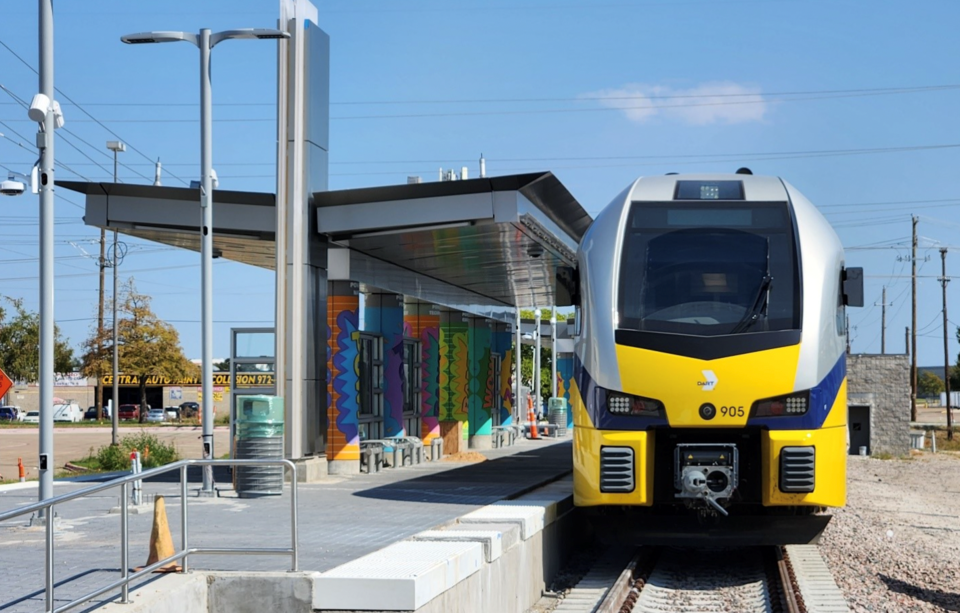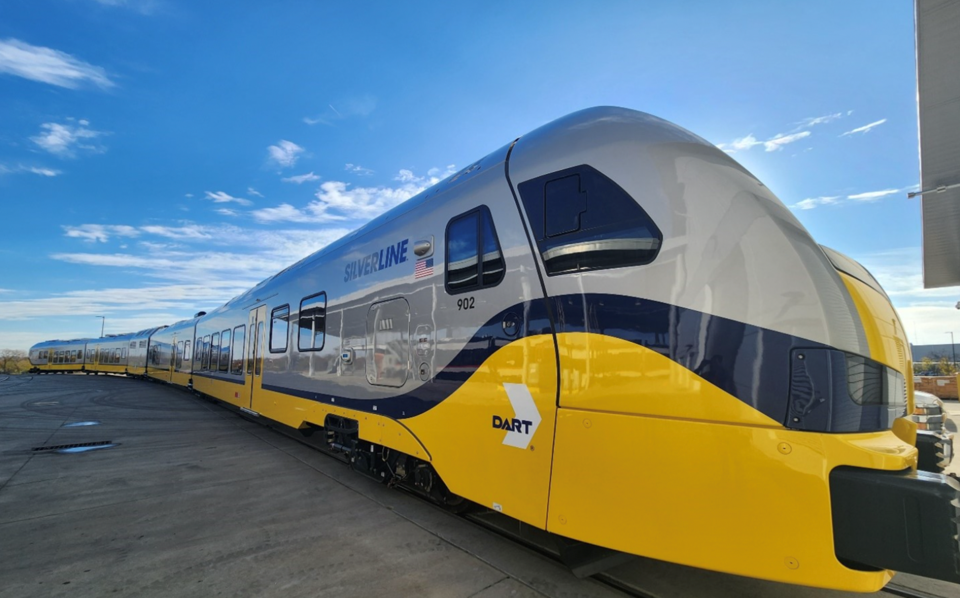Dallas Area Rapid Transit’s long-awaited Silver Line regional rail is inching closer to opening, and thankfully, it’s doing it a lot more quietly. Before welcoming passengers later this year, the new 26-mile commuter rail is dropping one signature habit of train travel: the horn.
Turns out, most people don’t want their morning coffee rattled by a 125-decibel wake-up call.
Quiet Zones Rolling Out Across North Texas
DART, in partnership with the Federal Railroad Administration (FRA) and six of the seven cities along the Silver Line, is implementing quiet zones at crossings where horns would typically blare. While train horns are still required during testing to alert motorists and pedestrians, that will soon change.
The first cities to get the hush treatment are Coppell, expected to go live with its quiet zone on July 30. Addison and Dallas are next up on Aug. 1, followed by Carrollton, Richardson and Plano on Aug. 22, pending final approval from the FRA.
“Safety has been one of our biggest priorities as we’ve pushed through on this project,” said Trey Walker, DART vice president of capital programs, in an official statement. “We want to thank everyone for their patience as we’ve worked through all the requirements needed with FRA officials to get these quiet zones active.”

How Quiet Zones Work
Once these zones are active, engineers will only sound the train horn in emergencies, such as if someone or something is blocking the tracks. Otherwise, it’ll be a (relatively) silent swoosh.
To earn FRA approval, DART and local officials had to install additional safety features along the route, including fencing, quad gates and unmountable curbs to prevent cars from bypassing crossing arms. These upgrades are designed to protect the public in the absence of routine horn blasts.
Both passenger and freight trains using the Silver Line tracks will be required to follow quiet zone protocols.
What Makes the Silver Line Different?
Unlike DART’s light rail system, the Silver Line is a commuter rail. The distinction matters. The Silver Line trains, manufactured by Stadler in Salt Lake City, run on diesel multiple-unit (DMU) engines that meet strict EPA standards. Each vehicle holds over 220 passengers and includes rider-friendly touches like multidirectional seating, overhead storage and CCTV cameras.
Think of it as the more polished cousin of light rail, with longer distances and fewer stops.
A New Link Across North Texas
Once operational, the Silver Line will connect seven cities (Grapevine, Coppell, Dallas, Carrollton, Addison, Richardson and Plano) across three counties. It’ll stretch from DFW Airport to Shiloh Road in Plano, providing a new mobility corridor through the heart of the northern suburbs.
With quieter crossings, upgraded amenities and a fresh rail option, DART hopes the Silver Line will make a lot of noise. Figuratively speaking, of course.
Don't miss anything Local. Sign up for our free newsletter.




